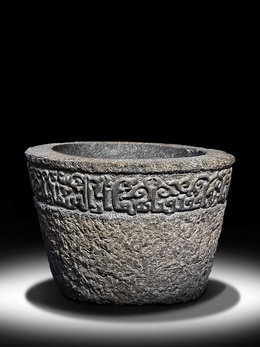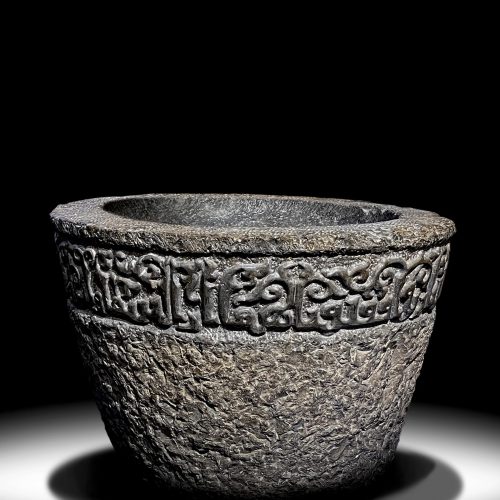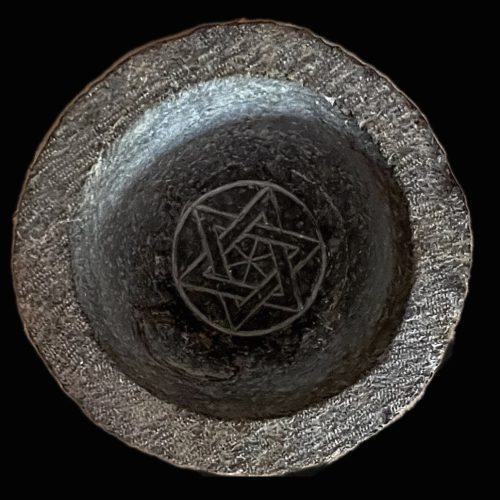Footnote: | The inscriptions contain references to water and its benefits from the Qur’an, “From it, you drink and out of it [grows] the vegetation on which you feed your cattle”; “[has provided] for your sustenance of things pure and good”; “And We made water every living thing”.The Zangids were of Turkic origin and ruled parts of Syria and Jazira, including Aleppo, Damascus and Mosul from AD 1127 to 1250. The region was rich in remains of Hellenistic, Roman and Early Christian monuments, and in centers such as Harran during the Islamic period, earlier stone elements were often re-used and classical ornament was copied.This particular basin would probably have once occupied a prominent position in a mosque or public building, where it would have been placed on a pedestal and filled with water. It has been suggested that the form of the present lot was based on a Byzantine capital, although no exact parallel has been found and the piece does not appear to be recarved; however, the closest comparison is a Byzantine basin with three rounded projections and a spout found in an excavation at Pyla in Cyprus in 2006.Objects from the Zengid period are rare, particularly in stone, and this item is an important addition to the existing corpus of known pieces. The basin is similar to carved marble of the same period in the Victoria and Albert Museum |
|---|







